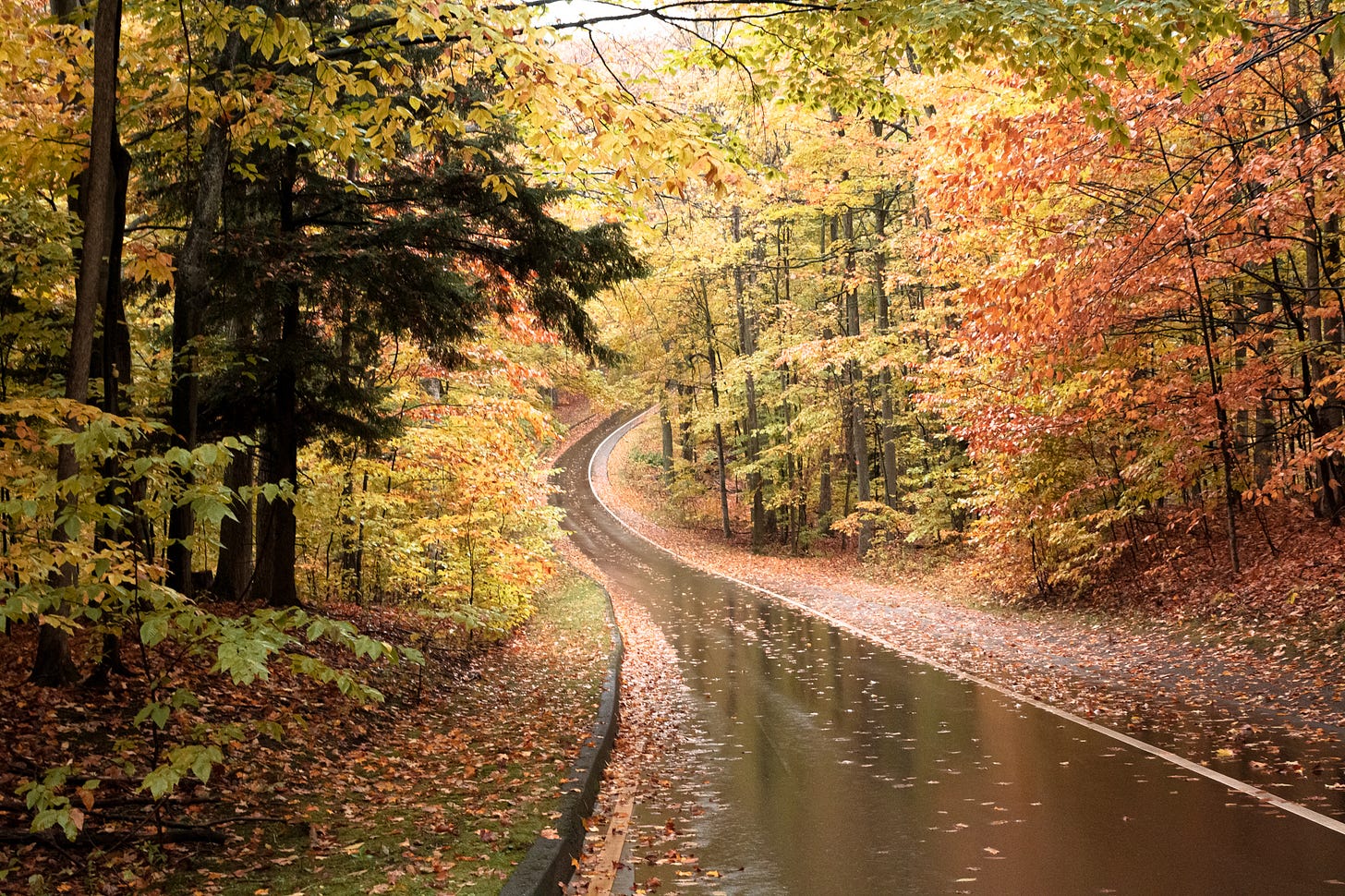Imagine you’re on your yearly fall color road trip, meticulously planned with a few friends. You picked out the “bucket list” hikes and spots you wanted to visit, and plugged them into Google Maps. You drove 5 hours to get here, maybe more.
You show up at the trailhead and the parking lot is full. A couple of cars have parked at the side of the road in the grass, and they are mostly out of the way, but you clearly aren’t supposed to park there.
What do you do?
It’s a realistic scenario, one that you and I have almost definitely both experienced. I’ll be the first to admit that I’ve totally parked on the side of the road. The other cars had all done it, and I’d planned my weekend around doing this one hike.
I wasn’t about to turn around just because the parking lot was full. At the time, it seemed fair.
I’ve changed my mind.
The “loved to death” reality
We need to stop parking on the side of the road if the trail is full. This article by “Bridge Michigan” discusses the impact of over tourism, specifically the hazards and impact of parking where we shouldn’t.
Not only is our off-road parking a safety hazard, but it might crush sensitive wildlife.
That, and the parking lots at trailheads are they size they are for a reason— the amount of visitors that trail and environment are equipped to handle at a given time is proportionate to that parking lot. Parking lot size is a sign of the resources a park has to manage and care for that trail and trailhead.
If we arrive at a full trailhead, we need to start moving on.
What can we do instead?
So you arrive at a trailhead and the parking lot is full. Don’t hike there, and certainly don’t create a parking space for yourself. Here’s what you can do instead:
1) Get up early
An easy way to combat crowds on trail is to get up early. Be one of the first people on the trail, and one of the first people off. This way you get to hike and experience the place you wanted without causing harm to the place you came to appreciate.
2) Come with a backup plan
Rather than park on the side of the road, head to an alternative trail instead. I’ve found a good strategy to be picking out 3-5 trails in the area, that way I always have a backup plan if my favorites are full.
There are plenty of resources out there to help you identify alternate hikes! I wrote a whole book covering a lot of those alternate places to hike. I’ve found that when you want to hit a popular trail like Oberg Mountain, or Empire Bluffs, or the Chapel Basin Loop, there is almost always a nearby alternate with a similar view but less people.
Your alternate hike doesn’t necessarily have to be way off the beaten path. All three of the trails listed above are more rustic hiking trails with limited facilities and parking that have become dangerously popular.
One option is to go to a lesser visited spot instead, but another option is to visit a more popular place, one with adequate parking that can support visitors and hikers during peak hours and seasons.
Think instead of Oberg, Tettegouche. Instead of Chapel Basin, Miner’s Castle.
3) Come back later
If the trailhead is full at 2pm, try coming back at 5 or 6pm when most people move on for dinner. Or, come back early in the morning tomorrow.
4) Adjust our expectations
Hey, I get it. You came all this way, and you really really wanted that iconic shot of Oberg Lake with all that beautiful fall foliage around it.
But we have to start prioritizing the places we’ve come to appreciate over our experiences appreciating them.
If we don’t, “loved to death” is going to be more than just a pithy headline.






